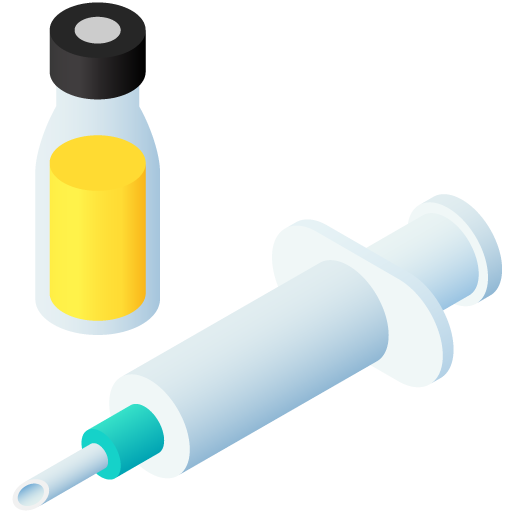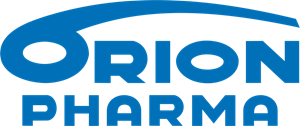Similar packages
Spasmium comp.
Active substance
ATC code
Species
Horses, cattle, pigs, dogs
Indications
Horses, cattle, pigs, dogs:
Treatment of spasms or sustained increased tonus of smooth muscles of the gastrointestinal tract or of the urine and bile excretory organs associated with pain.
Horses:
Spasmodic colics.
Cattle, pigs, dogs:
As supportive therapy for acute diarrhoea.
Dose to be administered and administration route
Intravenous use (i.v.): horses, cattle, dogs
Intramuscular use (i.m.): pigs, dogs
Dosage instruction:
|
Horses (i.v.): |
25 mg metamizole sodium monohydrate/kg body weight and 0.2 mg hyoscine butylbromide/kg body weight (i.e. 2.5 ml per 50 kg) |
|
Cattle (i.v.): |
40 mg metamizole sodium monohydrate/kg body weight and 0.32 mg hyoscine butylbromide/kg body weight (i.e. 4 ml per 50 kg) |
|
Calves (i.v.): |
50 mg metamizole sodium monohydrate/kg body weight and 0.4 mg hyoscine butylbromide/kg body weight (i.e. 1 ml per 10 kg) |
|
Pigs (i.m.): |
50 mg metamizole sodium monohydrate/kg body weight and 0.4 mg hyoscine butylbromide/kg body weight (i.e. 1 ml per 10 kg) |
Dogs (i.v. or i.m.): 50 mg metamizole sodium monohydrate/kg body weight and
0.4 mg hyoscine butylbromide/kg body weight (i.e. 0.1 ml per kg)
Treatment frequency:
Cattle and calves: up to twice daily for three days.
Horses and pigs: single injection.
Dogs: single injection. Treatment can be repeated after 24 hours if necessary.
The stopper must not be punctured more than 25 times.
Adverse reactions
Horses, cattle, pigs, dogs:
|
Very rare (<1 animal / 10,000 animals treated, including isolated reports): |
Anaphylactic-type reaction1 |
|
Undetermined frequency (cannot be estimated from the available data): |
Increased heart rate2; Dry mucous membrane3; Paralytic ileus3, Constipation3; Urinary retention3; Injection site pain4 |
1Should be treated symptomatically.
2In horses and cattle. Slightly. Due to the parasympatholytic activity of hyoscine butylbromide.
3Based on pharmacological properties of hyoscine butylbromide.
4In dogs. Can occur immediately after injection, which abate rapidly without negative impact on the expected therapeutic benefit.
Reporting adverse events is important. It allows continuous safety monitoring of a veterinary medicinal product. Reports should be sent, preferably via a veterinarian, to either the marketing authorisation holder or the national competent authority via the national reporting system. See the package leaflet for respective contact details.
Dispensing
POM-V - Prescription Only Medicine – VeterinarianReferences
SUMMARY OF PRODUCT CHARACTERISTICS
1. NAME OF THE VETERINARY MEDICINAL PRODUCT
Spasmium comp. 500 mg/ml + 4 mg/ml solution for injection
2. QUALITATIVE AND QUANTITATIVE COMPOSITION
Each ml contains:
Active substances:
Metamizole sodium monohydrate 500.0 mg (equivalent to 443 mg metamizole)
Hyoscine butylbromide 4.0 mg
(equivalent to 2.76 mg hyoscine)
Excipients:
Phenol (as preservative) 5.0 mg
For the full list of excipients, see section 6.1.
3. PHARMACEUTICAL FORM
Solution for injection.
Clear, yellowish solution.
4. CLINICAL PARTICULARS
4.1 Target species
Horses, cattle, pigs, dogs
4.2 Indications for use, specifying the target species
Horses, cattle, pigs, dogs: Treatment of spasms or sustained increased tonus of smooth muscles of the gastro-intestinal tract or of the urine and bile excretory organs associated with pain.
Horses only: Spasmodic colics.
Cattle, pigs, dogs only: As supportive therapy for acute diarrhoea.
4.3 Contraindications
Do not use in known cases of hypersensitivity to the active substances or to any of the excipients.
Do not use in cases of:
- gastro-intestinal ulceration
- chronic gastro-intestinal disorders
- mechanic stenoses in the gastro-intestinal system
- paralytic ileus in horses
- disorders of the haematopoietic system
- coagulopathies
- renal insufficiency
- tachyarrhythmia
- glaucoma
- prostate adenoma.
4.4 Special warnings for each target species
None.
4.5 Special precautions for use
Special precautions for use in animals
Due to the risk of anaphylactic shock metamizole-containing solutions should be administered slowly when given intravenously.
Special precautions to be taken by the person administering the veterinary medicinal product to animals
In a very small number of people, metamizole can cause reversible, but potentially serious agranulocytosis and other reactions such as skin allergy. Take care to avoid self-injection.
In case of accidental self-injection, seek medical advice immediately and show the package leaflet or the label to the physician.
People with known hypersensitivity to metamizole or hyoscine butylbromide should avoid contact with the veterinary medicinal product. Avoid use of the product if you are known to be sensitive to pyrazolones, or are sensitive to acetylsalicylic acid. Wash splashes from skin and eyes immediately.
4.6 Adverse reactions (frequency and seriousness)
In horses and cattle, a slight increase in heart rate may be observed occasionally due to the parasympatholytic activity of hyoscine butylbromide.
In dogs painful reactions at the injection site can occur immediately after injection, which abate rapidly and have no negative impact on the expected therapeutic benefit. In very rare cases, anaphylactic reactions may occur and should be treated symptomatically.
Based on pharmacological properties of hyoscine butylbromide, dryness of mucous membranes, paralytic ileus, constipation and urinary retention may occur.
The frequency of adverse reactions is defined using the following convention:
- very common (more than 1 in 10 animals treated displaying adverse reaction(s))
- common (more than 1 but less than 10 animals in 100 animals treated)
- uncommon (more than 1 but less than 10 animals in 1,000 animals treated)
- rare (more than 1 but less than 10 animals in 10,000 animals treated)
- very rare (less than 1 animal in 10,000 animals treated, including isolated reports).
4.7 Use during pregnancy, lactation or lay
Studies in laboratory animals (rabbit, rat) have not produced any evidence of a teratogenic effect. No information on use during pregnancy in the target species is available. An effect upon the smooth muscles of the birth canal can occur. Metabolites of metamizole cross the placental barrier and penetrate into milk. Therefore this product should be used only according to the benefit-risk assessment by the responsible veterinarian.
4.8 Interaction with other medicinal products and other forms of interaction
The effects of metamizole and/or hyoscine butylbromide may be potentiated by concurrent use of other anticholinergic or analgesic substances.
Concomitant use of inducers of hepatic microsomal enzymes (e.g. barbiturates, phenylbutazone) reduces the half-life period and hence the duration of action of metamizole. Simultaneous administration of neuroleptics, especially phenothiazine derivatives, may lead to severe hypothermia. Furthermore the risk of gastro-intestinal bleeding is increased upon concurrent use of glucocorticoids. The diuretic effect of furosemide is attenuated.
Co-administration of other weak analgesics increases the effects and side-effects of metamizole.
The anticholinergic action of chinidin and antihistaminics as well as the tachycardic effects of β-sympathomimetics may be enhanced by this veterinary medicinal product.
4.9 Amounts to be administered and administration route
Horse, cattle: intravenous use
Pig: intramuscular use
Dog: intravenous or intramuscular use
Dosage instruction:
|
Horse: |
25 mg metamizole sodium monohydrate/kg body weight and 0.2 mg hyoscine butylbromide/kg body weight (i.e. 2.5 ml per 50 kg) |
|
Cattle: |
40 mg metamizole sodium monohydrate/kg body weight and 0.32 mg hyoscine butylbromide/kg body weight (i.e. 4 ml per 50 kg) |
|
Calf: |
50 mg metamizole sodium monohydrate/kg body weight and 0.4 mg hyoscine butylbromide/kg body weight (i.e. 1 ml per 10 kg) |
|
Pig: |
50 mg metamizole sodium monohydrate/kg body weight and 0.4 mg hyoscine butylbromide/kg body weight (i.e. 1 ml per 10 kg) |
|
Dog: |
50 mg metamizole sodium monohydrate/kg body weight and 0.4 mg hyoscine butylbromide/kg body weight (i.e. 0.1 ml per kg) |
Treatment frequency:
Cattle and calves: up to twice daily for three days.
Horses and pigs: single injection.
Dogs: single injection. Treatment can be repeated after 24 hours if necessary.
The stopper must not be punctured more than 25 times.
4.10 Overdose (symptoms, emergency procedures, antidotes), if necessary
The acute toxicity of both active substances is very low. In studies with rats the symptoms were non-specific and included: ataxia, mydriasis, tachycardia, prostration, convulsions, unconsciousness and respiratory signs.
In case of overdosage treatment should be discontinued. Physostigmin is recommended as an antidote to hyoscine butylbromide. A specific antidote for metamizole sodium is not available. Therefore symptomatic treatment should be initiated in case of overdosage.
Due to the parasympatholytic activity of hyoscine butylbromide a slight increase in the heart rate was observed in some cases in horses and cattle following administration of the double therapeutic dose.
4.11 Withdrawal period(s)
|
Meat and offal: |
|
|
Horse, cattle (IV) |
12 days |
|
Pig (IM) Milk: |
15 days |
|
Cattle (IV) |
96 hours |
Not authorised for use in mares producing milk for human consumption.
5. PHARMACOLOGICAL PROPERTIES
Pharmacotherapeutic group: drugs for functional gastrointestinal disorders, Belladonna and derivatives in combination with analgesics, butylscopolamine and analgesics.
ATCvet code: QA03DB04
5.1 Pharmacodynamic properties
Hyoscine butylbromide
The parasympatholytic agent hyoscine butylbromide antagonises the muscarinic actions of acetylcholine by competitive inhibition of acetylcholine at parasympathetic nerve endings. Activity at the nicotinic receptors occurs only at high (toxic) doses. It inhibits the contraction of smooth muscles of the gastro-intestinal tract and urine and bile excretory organs. Due to its quaternary ammonium structure it cannot cross the blood-brain-barrier and therefore does not produce the central nervous effects of atropine.
Metamizole sodium
Metamizole belongs to the group of pyrazolone derivatives and is used as an analgesic, antipyretic and spasmolytic agent. It has significant central analgesic and antipyretic, but only low anti-inflammatory effect (weak analgesics). Metamizole inhibits the synthesis of prostaglandins by blocking the cyclooxygenase. The analgesic and antipyretic effect is mainly due to inhibition of prostaglandin E2 synthesis. In addition, metamizole has a spasmolytic effect on smooth muscle organs. Metamizole sodium further antagonises the effects of bradykinin and histamine.
5.2 Pharmacokinetic particulars
Hyoscine butylbromide
The quaternary ammonium structure confers poor absorption after oral administration and prevents the transition to CNS also after parenteral administration. 17 – 24% are bound to plasma proteins. Elimination half-life is 2 – 3 hours. Hyoscine butylbromide is excreted mostly unchanged via the kidneys. After parenteral administration hyoscine butylbromide is mainly eliminated in urine (approx. 54%). Following oral administration only 1% of the administered dose is excreted in urine.
After intravenous injection the onset of action is immediate, after intramuscular injection it is delayed for 20 – 30 minutes. Depending on administration route and clinical picture the spasmolytic effect lasts for approximately 4 – 6 hours.
Metamizole sodium
Metamizole sodium is rapidly absorbed with an absolute bioavailability of approximately 100%. The primary metabolite of metamizole sodium in plasma and urine is the pharmacologically active 4-methyl-aminoantipyrine (MAA).
Other metabolites (4-acetyl-aminoantipyrine (AAA), 4-formyl-aminoantipyrine (FAA) and aminoantipyrine (AA)) are present in smaller quantities. Plasma protein binding of the metabolites is as follows: MAA: approx. 56%, AA: approx. 40%, FAA: approx. 15%, AAA: approx. 14%. The plasma half-life of MAA is about 6 hours. After oral or intravenous administration metamizole sodium is primarily eliminated renally (50 – 70% of the dose, depending on species), in lactating animals also via milk.
6. PHARMACEUTICAL PARTICULARS
6.1 List of excipients
Phenol
Tartaric acid (E 334)
Water for injections
6.2 Major incompatibilities
In the absence of compatibility studies, this veterinary medicinal product must not be mixed with other veterinary medicinal products.
6.3 Shelf life
Shelf life of the veterinary medicinal product as packaged for sale: 3 years
Shelf life after first opening the immediate packaging: 28 days
6.4 Special precautions for storage
After first opening the immediate packaging do not store above 25°C.
6.5 Nature and composition of immediate packaging
Cardboard box with amber glass vial (type II) with bromobutyl rubber stopper and aluminium cap.
Pack sizes: 100 ml, 5 x 100 ml
Not all pack sizes may be marketed.
6.6 Special precautions for the disposal of unused veterinary medicinal product or waste materials derived from the use of such products
Any unused veterinary medicinal product or waste materials derived from such veterinary medicinal product should be disposed of in accordance with local requirements.
7. MARKETING AUTHORISATION HOLDER
VetViva Richter GmbH
Durisolstrasse 14
4600 Wels Austria
8. MARKETING AUTHORISATION NUMBER
Vm 57446/4005
9. DATE OF FIRST AUTHORISATION
8 September 2015
10. DATE OF REVISION OF THE TEXT
January 2023 
Approved: 23 January 2023

 TRUSTED SOURCE
TRUSTED SOURCE








